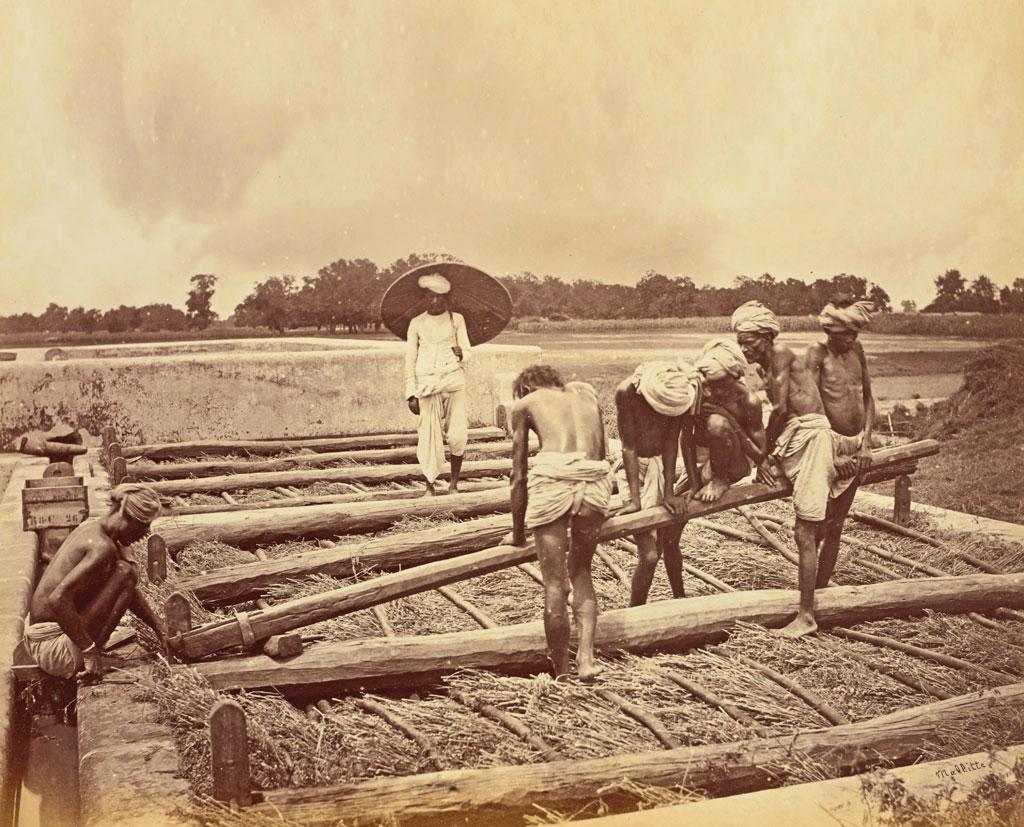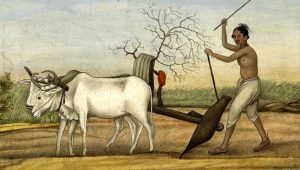Table of Contents
Introduction
Land tenure system explains the traditional or legal rights individual or groups of individuals have on land and the social relationships among the rural population that emerges from such land rights. It has two constituents namely, the system of land ownership and secondly, the system of labour organization in rural regions. Thus depending on the local circumstances and prevailing conditions, many land tenure systems have developed in different countries in varying socio-economic milieu. These systems have been influenced by local factors such as socio-cultural values, political ideologies, level of technological advancements, population trend etc. On the one hand and natural conditions such as climate, soil conditions, topography that have evolved over the period of time.
Similarly, land tenure system in ancient India is marked by gradual changes that has evolved from common ownership to individual ownership. Since human beings used to move as tribal groups from place to place. Land was considered to be the gift of nature and no person in particular owned it. It was commonly used by all the members of the tribal groups. At later stages, when man started practicing settled agriculture, the concept of individual ownership developed. Agriculture in this period was in the transitory stage of nomadic cultivation and settled agriculture.
Stages of Development Of Land Tenure System In Ancient India
Vedic Age
During the Vedic Period, it was founded that there was the concept of individual ownership of land. It was believed that land was considered to belong to the person who first cleared it. At times of peace, this system of establishing the title to landed property would have seemed a rational one. But in the transitory stage of nomadic agriculture, the pieces of land that were cleared for cultivation would also have been held under the common ownership of the tribe. Only when settled agriculture/ nomadic agriculture became the mode, the practice of individual ownership of land could have come into existence.
It can be learnt from the Vedic literature that the Vedas prohibited land grants, and all property was under common ownership and the idea of gifting land to anyone would have appeared unlikely. The tradition referred to in the Vedic text – “Shatapatha Brahmana” and in the “Mahabharata” suggests that land must not be given away even on the plea of a sacrificial fee. The fact that land grants were being scoffed at, shows that up to the Mahabharata period (dated around 900 B.C.E.) the idea that land could be an object of sale and purchase had not yet been established.
Post Vedic Period
In the post Vedic period, land was no longer the common property and private ownership of land was gradually being established. Though the practice of land grant had started, it was not readily accepted by all and looked upon with an attitude of indecisiveness. When individual ownership finally came to be established, it had been linked with the labour responsible for making it.
Also, in those days social stratification and the caste system of the later days of Magadhan imperialism (i.e. after 500 B.C.E.) had yet not been established. In the tribal setup of the days of the Rig Veda (i.e. before 1500 B.C.E.) every male member of a tribe had to hunt collectively. Thus, every member of the tribe seems to have had an equal right to whatever the tribe produced collectively. Even the tribal chief could not exert his powers.The Vedic king’s authority was also very limited, it was evidence from the fact that in the Atharva Veda “God Indra was also to give the king’s share (Bhaga) in the village”.
Land Ownership Rights as per Manusmriti
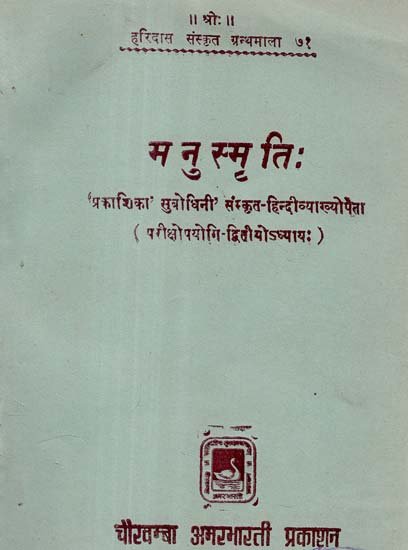
According to Manusmriti “Land belongs to him who first cleared the timber and a deer to him who first wounded it.” This couplet provides a clue to the understanding of a very important doctrine of ancient Indian economics. It is evident from this statement that to begin with the title to property of land was allied to the labour who made it cultivable. Thus the practice of giving land grants as well as sale and purchase of land would be considered strange as there existed a vast stretch of freely available land which could be cleared and claimed by any person.
With the settling of Aryans society in the Gangetic plains, the population gradually increased and the shortage of cultivable land began to be felt and frequent transfer in the ownership of land was often resorted to. Such changes in ownership land from common to individual also affected the language. Meaning of words such as Bhratru and Bhratrivya, meaning “Brother And Brotherhood“ in Atharva Veda, also changed to “Rival And Rivalry“. Thus it is evident that hostility was becoming common within Vedic Kulas (families) due to the ownership of land the system of landholding also gradually underwent fundamental changes. In the beginning, the Gana (whole tribe) held the land that it cultivated. Then the ownership gradually narrowed down to the Vamshas (Blood Relations) which further branched into the Kulas or (Families). This narrowing down of ownership must have also affected the size of the individual holdings. As per Manusmriti, Individual land ownership was also accompanied by the people’s urge for possessing large tracts of land even if it was grabbed from others. In this way, the landed estates must have come into existence as a result of war between one kingdom by another and the grabbing of land. Yet another example given by Manu, was the performance of “Ashwa- Medha Yagna” performed by a king in order to expand his territory and bring other lung under his sway. Such accumulation of land in the hands of a few landlords created a class of landlords and cultivators.
Rise of the Big Monarchical States in the Ganges Valley
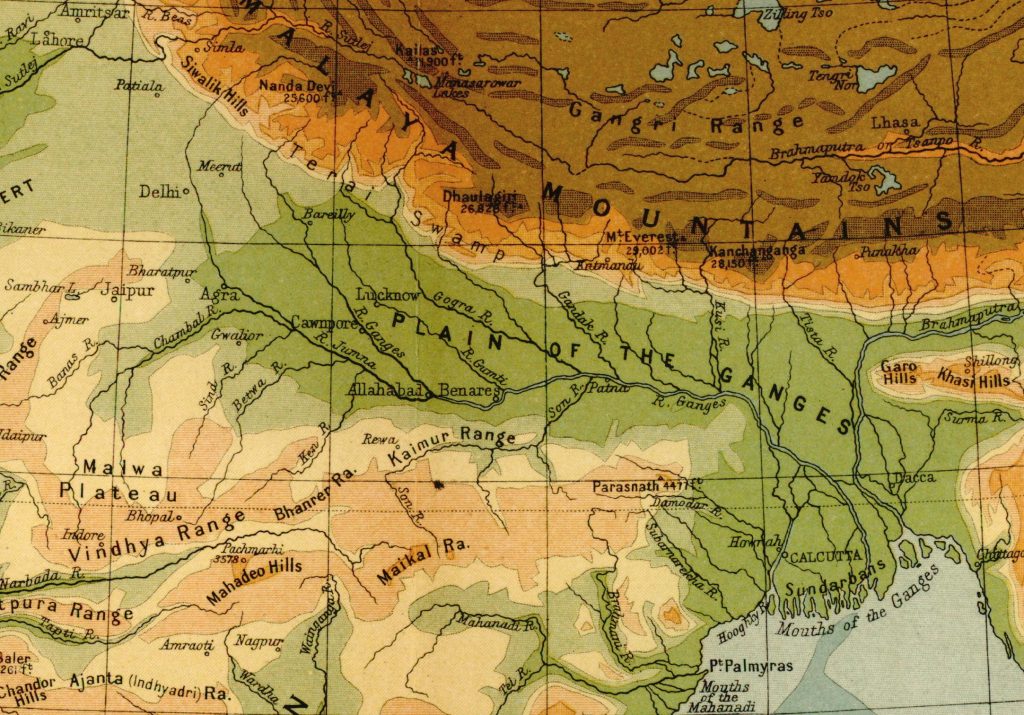
With the formation of monarchical states and their capital cities which were the hub of mercantile activities, there emerged a class of absentee landlords who largely lived in the cities but had vast landed properties in rural areas. Such absentee landlords are mentioned in the Pali text of Buddha’s time. These absentee landlords had landholdings relatively near the monarchical states of the Ganges valley, e.g. Kosala and Magadha. As these landlords came under the sovereignty of the kings of Kosala and Magadha their land holdings came to be integrated with the prospering mercantile economy of the kingdoms.
In these monarchical states, the landlord-merchants played the role of intermediaries between the state and the actual tillers of the soil. Thus a nexus was established between the state and the landed aristocracy. But in the foothills of the Himalayan ranges such as Mallas, Lichavis, Koliyas etc which were outside the Gangetic monarchical states of Magadha and Kosala, did not come under the sovereignty of any outside kings. Their landholdings did not have any significant mercantile contacts with the outside world and were not loyal to any King. These landlords were bound to one another in a tribal oligarchy, which neither gave taxes to the monarchies of the Ganges valley nor did they acknowledge any sort of sovereignty of any outside monarch.
Thus began the struggle between the tribal oligarchies and the monarchical states. This struggle was the main cause for destruction of the independent tribal oligarchies. The victory of the monarchies was also the victory of a more advanced and organised economy. Land came under state supervision and the state adopted measures which siphoned off a large segment of the produce as revenue to be collected in the royal treasury. This further increased the strength of the monarchical states.
Improved Revenue Collection System Under Mauryan Empire
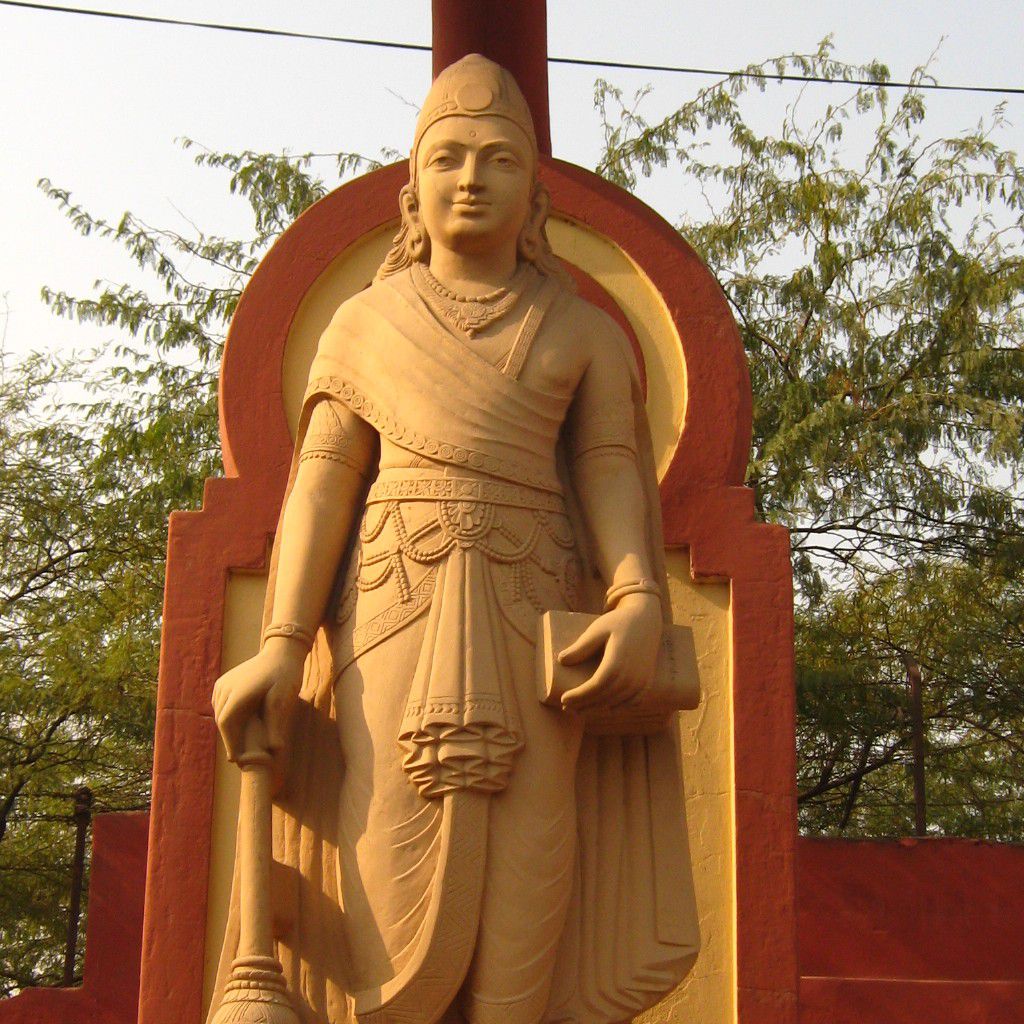
The Maurya empire was established by Chandragupta Maurya soon after Alexander’s departure. Revenue collection was now a different task than what it had been under the small pre-Mauryan kingdoms of the Ganges valley. This task was difficult as there was dense forest separating the isolated pockets of settled agriculture and surplus population in the Ganges valley. Besides, there were also the aboriginal tribes that roamed in the forests practicing shifting agriculture. Thus, mauryan state became the central land clearing agency with the objective of extending settled agriculture and breaking up the disintegrating remnants of the frontier hill tribes, whose members could serve as a useful source of providing labour-cultivators on these newly cleared forest lands.
Types of agriculture landholdings in Mauryan States
Mauryan agriculture had two types of landholdings.
- Rashtra Type- This type of land holding was the direct descendant of the holding of the former tribal oligarchies who had been subjugated in pre-Mauryan times. The Rashtra landholding was to a large extent independent of the state machinery in their internal functioning and administration. Their only obligation was the regular payment of the Rashtra taxes to the state.
- Sita Type- This type was formed by clearing forestland with the help of the tribesmen. This clearing up of forests opened contacts with tribes in areas still farther away. This was the beginning of the margin of the monarchical revenue system and of settled agriculture. The state maintained a close control over the state owned Sita land which could not be sold or transferred without special permission. This land was not made the property of the cultivator. It was leased to him for his lifetime and he could hold the lease on condition that he cultivated the land and paid taxes. The penalty for non-cultivation was confiscation of the leased land.
Hence, it could also be observed that in Mauryan times the revenue tax bore a close proportionate relationship with the size of the crop.
Stringent measures adopted to control the peasants during Mauryan times, the kings undertook various measures to eliminate all the possibilities of any resistance from the peasant class. Some of these measures are as follows:
- Work that could give rise to common tribal solidarity was not allowed.
- Even religious associations were restricted. For example: Barring the entry of Buddhist and Jaina Bhikshus on these Sita lands to prevent the conversion of peasants to unproductive monks.
- Also Chanakya’s Arthashastra state restricted the construction of buildings in villages which could be used for sports and recreational activities for the peasants.
- State also prevented the entry of actors, dancers, singers, drummers, buffoons and bars so that there shall be no disturbance in the work of villages.
- They also established guarded frontiers for each of the isolated and disjointed agricultural villages called Janapadas. These internal frontiers served the purpose of toll and tax collection and for exercising control over the movements of peasants.
This controlled regimen helped the Mauryas to have a highly centralized character of the empire. This can be termed as the Mauryan socialism meaning state ownership of the means of production. Besides the agricultural land holdings, it also owned warehouses, shipyards and mines. Thus the Mauryan economy functioned not only without intermediary revenue collectors but also in the heavy and basic industries of those days.
Relationship between kings intermediaries and peasants in the Mauryan Empire
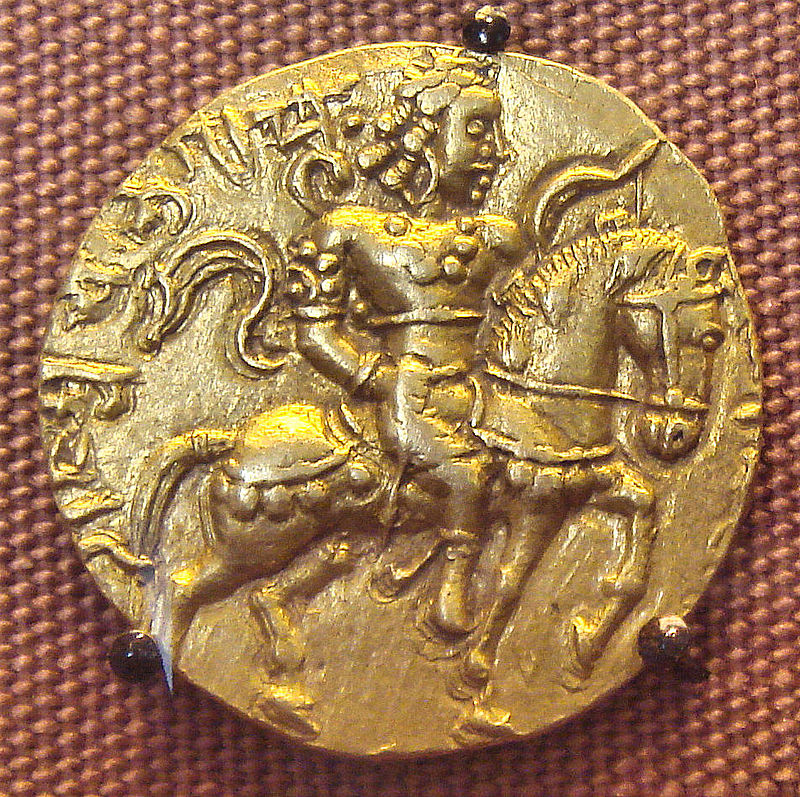
In those days land vested in the kings or states which was leased to the lower castes or peasants. In order to make the virgin land cultivable, the state allowed remission of taxes for a few initial years and other concessions by way of supplies of cattle, seeds and agricultural instruments, which they were required to repay later. But these cultivators could sell off no land, they were supposed to cultivate it and give the revenue to the state. These cultivators of the Sita land were termed the Ardha-sitikas or Half Share-croppers as they were entitled to only a portion of the crop they reaped, with the rest going to the state as revenue.
Also, Unlike Jagirdars of the medieval ages the Mauryan revenue collectors were paid employees of the state. These relations were basically feudal in nature and were preserved by the various dynasties that followed the Mauryas.
Gupta Period
In this period it is argued by many that the state was the exclusive owner of land. This is supported by the Paharpur copper plate inscription of Buddhagupta where it is stated that the emperor representing the state acquired the wealth as well as spiritual merit, when he made land grants. This obviously means that he was the owner of the land. There are also indirect evidence that elaborate official procedure had to be undergone while obtaining land grants which also indicates that the king had the supreme ownership on land, otherwise he could not have transferred comprehensive rights to the recipient. However even after the donation of land, the king had certain prerogatives over the land.
Types of land tenure system in Gupta Period
There were different land tenures in the Gupta period which is evident from Gupta land grant inscriptions. These are:
- Nivi Dharmas- It means land endowment in perpetuity.
- Nivi Dhamas Aksayana– A perpetual endowment in which a recipient could not alienate but could make use of the income accruing from it eternally.
- Aprada Dharmas- It means that a recipient had all rights to enjoy such a property but no right to make a further gift of the same and could only enjoy the interest and income from the endowed land, but had no administrative rights.
- Bhumichchhidranyaya– This meant rights of ownership as were acquired by a man while making barren land cultivable for the first time and was free from liability to pay rent for it
The first kind of trusteeship was prevalent in many parts of north and central India, but other kinds of trusteeship were probably followed mainly in the eastern part of the Gupta empire.
Beginning of Subinfeudation of Land and Usage of Coins
The Gupta period also marks the beginning of Subinfeudation. The Indore grant of Skandagupta in central India authorizes the grantee to enjoy the land, cultivate it and get it cultivated, so long as he observes the conditions of the grant. Another example of Subinfeudation of land was that apart from the state cultivators and individual cultivators, Brahmins, Buddhist, and Jaina Sanghas brought waste land under cultivation when these were donated to them as religious endowments and hired labourers for its cultivation or let out the land for share-croppers.
Also the Gupta period introduces a system of cash payment of revenue tax along with kind payment. Usage of coins for frequent in the transaction and payment of revenue taxes to the kings.
New Agrarian Economy in Post Gupta Period
This period is characterized by the emergence of a new agrarian economy, which is attributed to the growing practice of land grants. This practice had its origin in the pre-Gupta period that grew in the Gupta era and became quite frequent in the post-Gupta period. Though religious merit was thought to be the reason for making these land grants, the real reason was a serious crisis that affected the ancient social order. Land was granted to priests and officials in lieu of salaries and remuneration. This method had the advantage of putting the burden of collecting taxes and maintaining law and order in the granted lands on the recipients i.e. the priests and other officials.
However, the land recipients could neither cultivate themselves nor collect revenues. Hence, the work of cultivation was given to peasants or sharecroppers, who were attached to the land but did not legally own it. So these groups of people continued to work in these lands and could not move from one village to another. Thus a new agrarian economy emerged with a new agrarian structure, which was characterized by:
- Grant of barren as well as cultivable land;
- Transfer of to the grantees;
- Imposition of forced labour;
- Restriction on the movement of the peasants;
- Delegation of fiscal and criminal administrative power to the religious beneficiaries;
- Remuneration in the form of land grants to the officials;
- Growth of the rights of the grantees;
- Multiplicity of taxes;
- Growth of a complex revenue system;
- Wide regional variation in agrarian structure; and
- This also marked the origin and development of feudalism
Conclusion
Thus we could see that there has been significant development in the land tenure system from the Vedic Age to Post Gupta Period in Ancient India, providing a simple and yet systematic method for collection of revenue taxes from the peasants. Also we find the traces of individuals as well as village holdings of lands. Also there was proper procedure for surveying and accessing of lands and accordingly revenue was collected. And there was proper demarcation of lands. The power of kings and intermediaries have been seen growing throughout this period and with the beginning of Medieval Period, zamindars play a vital role in the land tenure system.
